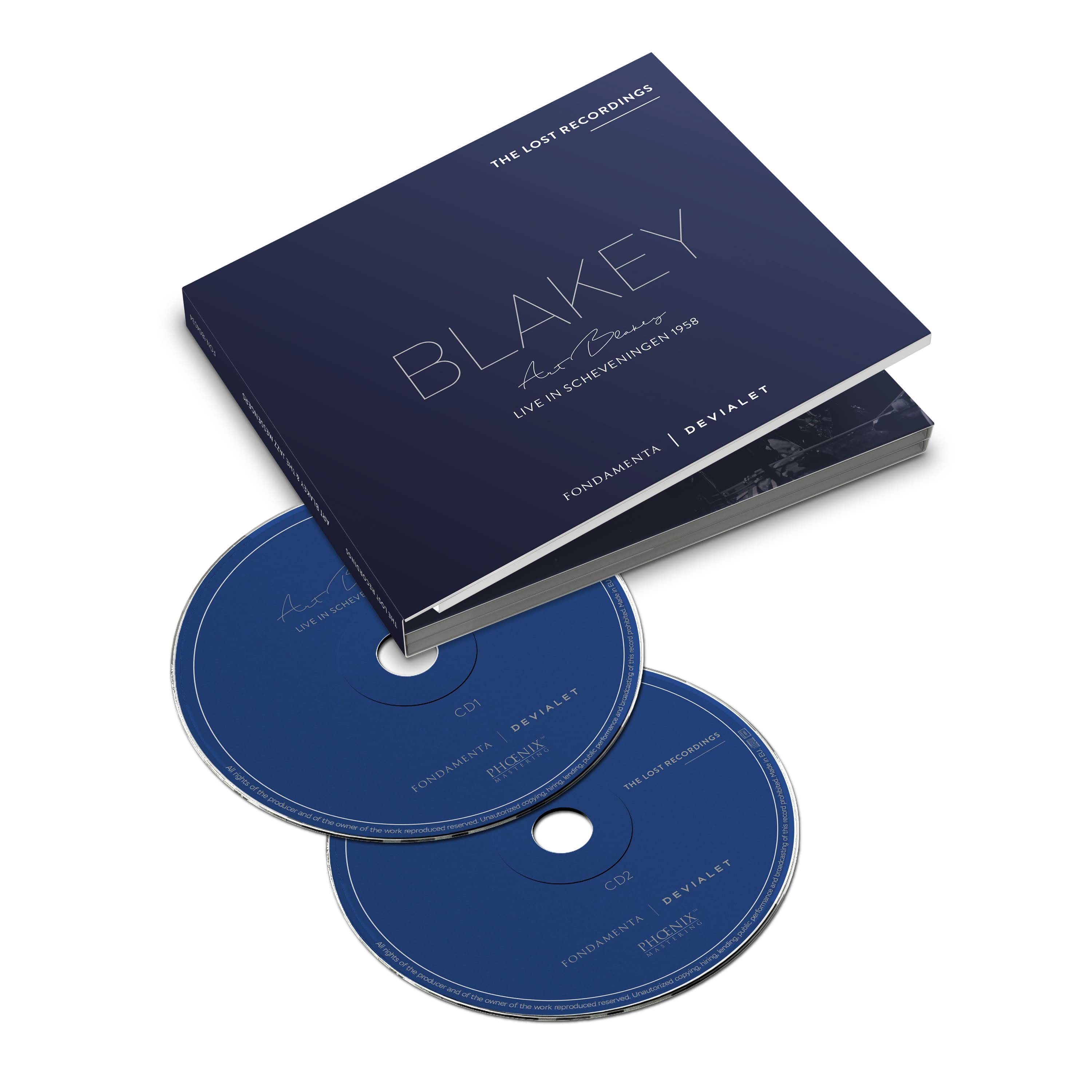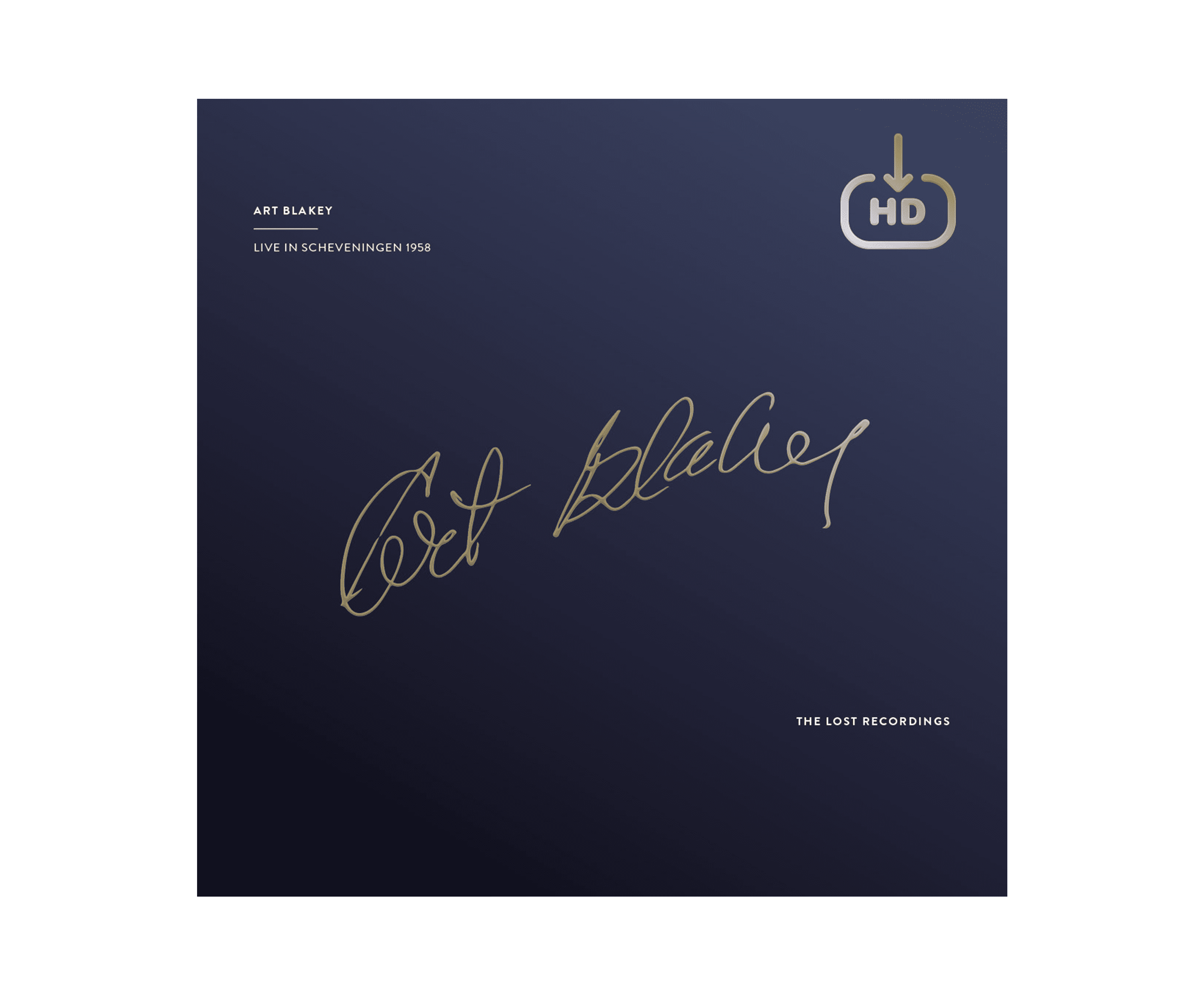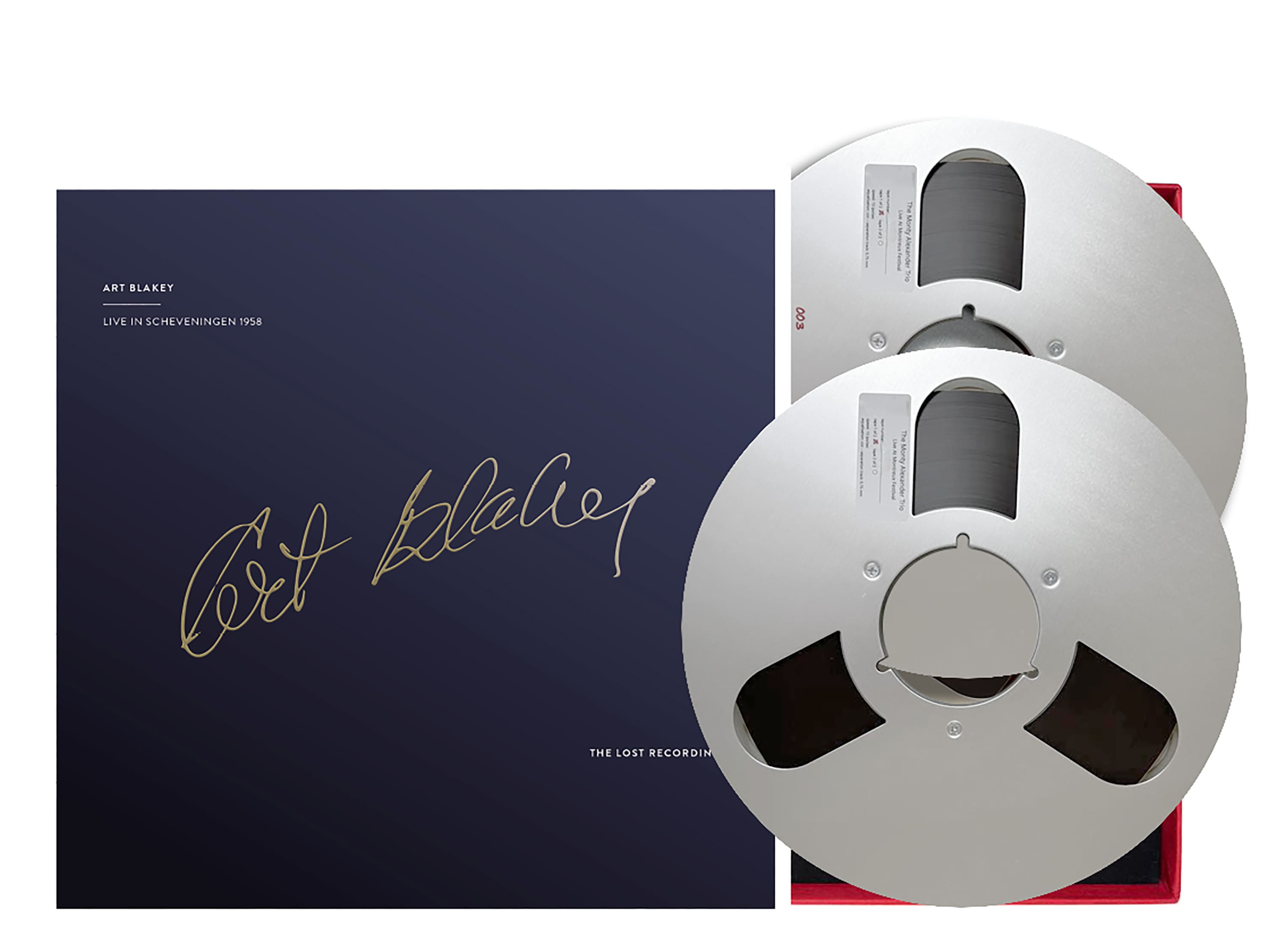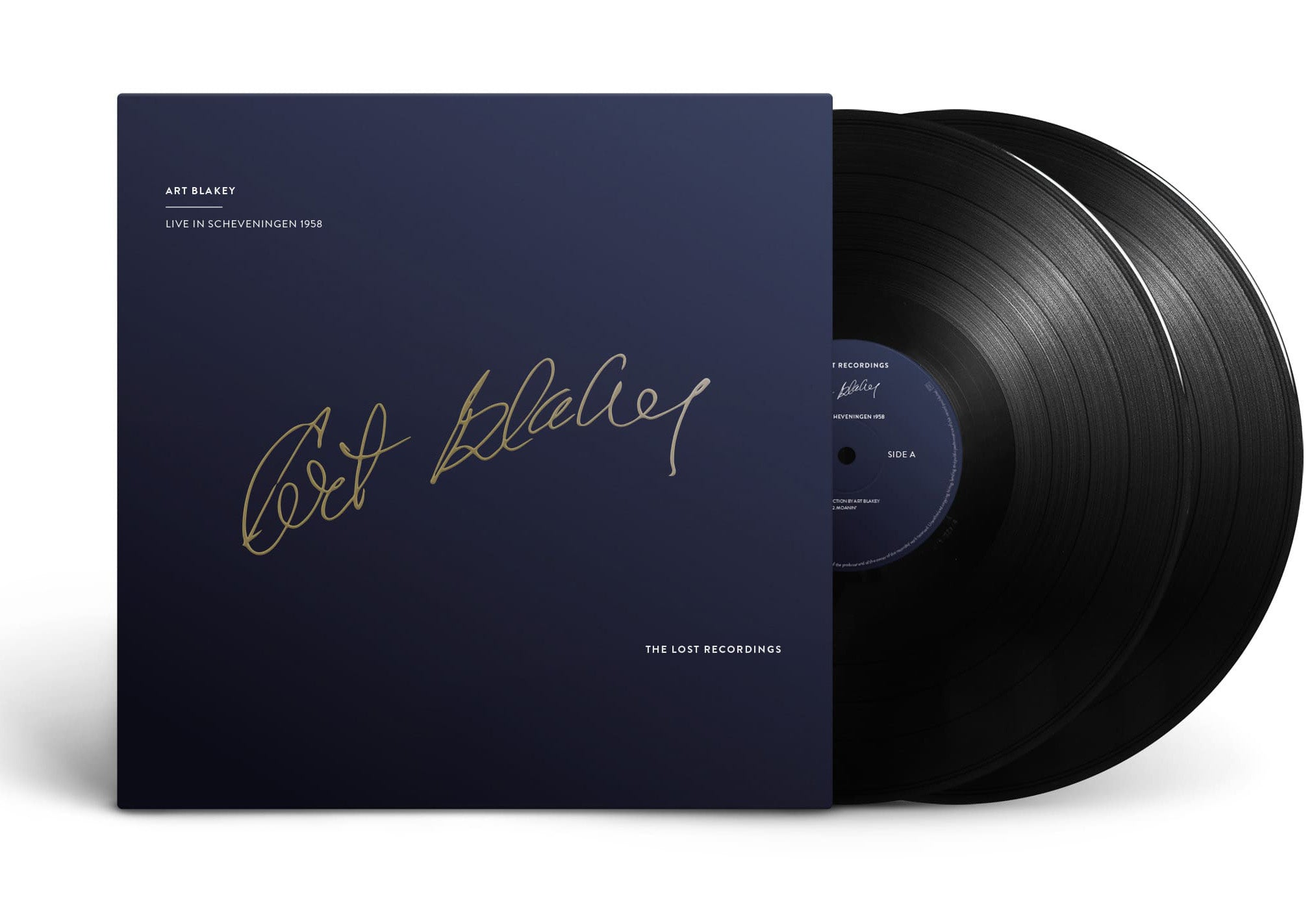ART BLAKEY
Live in scheveningen 1958
Subscribe to our newsletter to stay informed about new releases.
A complicated childhood
Art Blakey was born on October 11, 1919 in Pittsburgh, Pennsylvania. Coming from a poor and very religious family, we know very little about the early years of Art Blakey. According to some rumors, Art Blakey worked in the mine and then in a steel mill before devoting himself entirely to music around the age of 20. Initially a pianist in a local big band inspired by Count Basie, Art Blakey quickly switched to drums to accompany pianist Marie-Lou Williams and finally joined Fletcher Henderson's band for a year (1943-44).

The beginning of a career unlike any other
Later, Art Blakey was spotted by Billy Eckstine, who allowed him to join his modernist big band, which brought together the finest young boppers like Dizzy Gillespie and Miles Davis. He stayed with the band until its dissolution in 1947. Later, he became the leader of a participatory big band under the name of The Seventeen Messengers and was attracted by the new directions jazz was taking. He became close to a number of musicians such as Sonny Rollins, Bud Powell, Miles Davis and Thelonious Monk. Art Blakey participated in the first Blue Note sessions of the pianist in 1947 and, at the turn of the 50s, he became one of the most popular drummers of this new scene. Blakey began a fruitful association with pianist Horace Silver, co-leading a series of groups with him, including a quintet with Clifford Brown on trumpet, Lou Donaldson on alto saxophone and Curly Russell on double bass. The public recording of this quintet in 1954 on Blue Note caused a sensation by imposing itself as the aesthetic manifesto of a new trend: hard bop.

A leader is born
Continuing their research in the direction of this synthesis between the formalist advances of bepop and the fundamentals of black music such as gospel or blues, Horace Silver and Art Blakey formed a new quintet with Hank Mobley and Kenny Dorham in 1955 under the name Jazz Messengers. The following year, Horace Silver left the group, making Art Blakey the sole leader. The drummer was to bring his rhythmic genius, his flair and his organizational skills to life. Jazz Messengers, which in 35 years on the front of the stage will be one of the most influential groups in the history of jazz. It is also an incubator of young talents of exceptional quality such as Johnny Griffin, Lee Morgan, Wynton Marsalais or Terence Blanchard. Over the years, through the eras and according to the sensibility of the various musicians who will successively take the musical direction of the group, The Jazz Messengers sometimes venture on idiomatic territories reflecting the mood of the times but never by denaturing the archetypal forms of hard pop. Art Blakey, always behind with his inimitable sense of tempo, accentuation and revival, thus ensuring continuity of level, style and spirit. Art Blakey leads his own orchestra until the end of the 80's still participating in some recording sessions as a sideman and in concerts with great glories of jazz history.
The end of a reign
Art Blakey died on October 16, 1990 in New York as a result of lung cancer.



